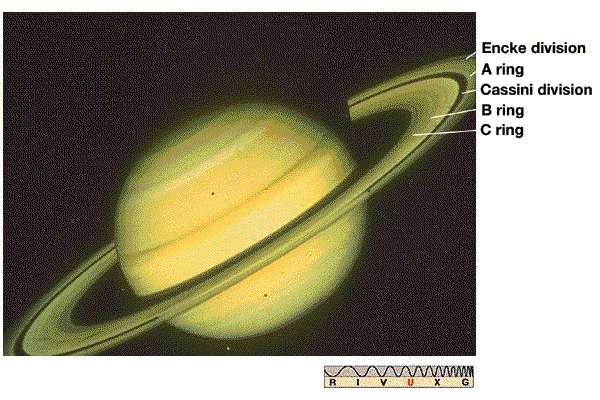-
Saturn has long been known for its extensive ring system (having
been discovered in
the early 1600's by Galileo). The rings
appear to be solid as viewed from afar but a close look reveals that they
are actually made up of small chunks (centimeters to tens of meters) of
rock and ice; each particle orbits Saturn
obeying a version of Kepler's Laws of planetary motion.

The rings are exceedingly thin; they are less than 1.5 km thick and more than 250,000 km in diameter! Viewed edge-on the rings, in fact, almost disappear completely from view as seen during ring plane passages.
The radius of Saturn is roughly 60,000 km and so, roughly speaking, the ring system of Saturn sits within about 1 planetary radius of the surface of the planet. This is, in fact, a general property for ring systems, because of something known as the Roche limit. The Roche limit arises as follows:

There are several distinct regions in Saturn's ring system:

The large gap near the middle of the main rings, the Cassini division, separates the outer A ring from the inner B ring (see below). There are fainter rings inside of the B ring known as the C and D rings. Embedded in the A ring is the gap known as the Encke division (see below).

Outside the A ring sits the narrow F ring. The F ring is interesting in its narrowness and its nonregular shape (it appears braided). The narrowness of the F ring is thought to arise because of the effects of shepherd moons, Pandora and Prometheus. (Note that the Encke division is thought be opened by the effects of the shepherd moon Pan embedded in the A ring.)
The rings are even more complicated than shown above, much finer structure exists,

much of which is hard to understand.
